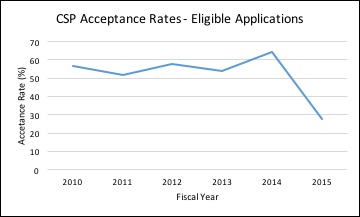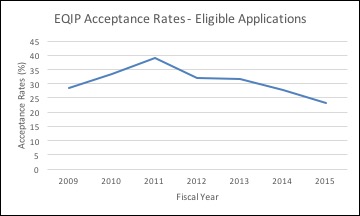By Cameron Gray
Opportunity Lives blog
NRA News
When we were kids in the 1970s and ’80s, the rule was go outside and play, and don’t come home until sunset. We rode our bikes all over town, explored the woods behind our houses, set up forts, and had the time of our lives. Today, sadly, kids don’t get outside that much and parents are increasingly afraid of letting them out of the house unsupervised. Government authorities have detained children walking to the park or playing a block away from home. Technology, especially video games, has kept kids indoors and sedentary.
Lately, however, there has been a concerted effort by organizations around the country to fix this problem, and to get kids out of the house. One of those groups is Pass It On – Outdoor Mentors.
Pass It On started in 1999 as a partnership between the Kansas Department of Wildlife & Parks and Kansas Big Brothers Big Sisters. Kansas had just implemented the state’s first youth upland hunting season, and the Wildlife & Parks Department recognized a need for people to coax more children and teens outdoors for hunting and fishing. Kansas Big Brothers Big Sisters hired Mike Christensen as director of outdoor mentoring in 2002.
“Big Brothers Big Sisters’ interest in setting up an outdoor mentoring program was seen as a way to attract more men to mentoring,” Christensen explained. “It was a win-win-win. Kansas Department of Wildlife & Parks saw more kids getting outdoors, Big Brothers Big Sisters got more men as mentors and the kids got to go hunting and fishing with a positive role model.”
In 2006, Pass It On spun off from Kansas Big Brothers Big Sisters, with Christensen left in charge of the program.
Pass It On has found that, typically, youth mentoring organizations have a standing list of kids who need or want a mentor. They are especially in need of men, as about three-quarters of waiting lists tend to be boys. Pass It On targets established outdoor organizations such as Pheasants Forever, the National Wild Turkey Federation and Ducks Unlimited to find men and women with an interest in sharing time outdoors with a child. Because safety is always crucial, Pass It On works closely with its partner organizations, who conduct background checks and manage the matches once they are made.
Christensen admits that it’s not always easy to get kids interested. “A couple of years ago, we had a young boy whose mom had to literally shove him out of her car when dropping him off for one of our events,” he recalled. “By the end of the day, he was all excited and couldn’t wait to go again. He had no idea what we were going to be doing that day. It was a day spent with the local bird dog club, who took everyone to a member’s ranch. We set up clay target shooting and the kids did some fishing. He was more than ready to go again.”
Pass It On takes kids on many and varied outdoor adventures, depending on the season. In the spring, it’s fishing, turkey hunting and shooting clays at the range. Summertime means fishing and target shooting. In the fall and winter, the mentors take kids deer, waterfowl, dove and upland hunting. Outings could be as small as one or two kids, or as large as 300 participants.
Christensen is proud of a new initiative, the First Hunt program, in which Pass It On offers a first hunt to new hunter education graduates.
“We take up to 20 new hunters at a time to the field, where we give them some shotgun instruction, and then have them ‘hunt’ for pheasants we’ve placed in bird launchers,” he explained. “This lets us conduct a very safe, controlled hunt for these new hunters, emphasizing what they have learned in the class. These First Hunt events are open to any and all new hunter education graduates.”
One of the many great things Pass It On — Outdoor Mentors sees is children and teens that continue with outdoor activities. Christensen says that the first boy he mentored, Dana, now hunts and fishes on a regular basis, taking his younger brother along with him on many occasions. Dana, along with other former participants, also volunteers to help mentor other kids, “passing it on.”
When Christensen asked about the nicest things he’s heard from people he has worked with over the years, he readily answers: “From the kids, ‘When can I go again?’ And we hear that a lot. Hearing that means that we did our job, providing a safe, memorable event and that they want more. The seed has been planted. Now we need to cultivate it! It doesn’t get any better than that,” he said.
“The kids get excited,” he added. “Their self-confidence grows. Their self-esteem is boosted. They see themselves in a different light having gone hunting and having spent time outdoors doing things that are way out of their comfort zone.”
Parents often say “thank you.”
“We really appreciate it when the parents see the positive changes to the kids from participating in these events,” Christensen said.
As for the mentors, Christensen said they often tell him they get more out of the program than the kids. “Mentoring a child can be a tremendously rewarding experience,” he said. “Getting to see the outdoors through the eyes of a child experiencing it for the first time is a truly neat and rewarding experience for the mentor.”
Pass It On covers all of the costs for the kids. The group asks the volunteers to cover any costs they may incur. Many of the kids they work with come from low-income families, and Christensen says they don’t want cost to discourage anyone from getting outdoors. Thanks to generous supporters, Pass It On can provide opportunities for kids who wouldn’t be able to participate otherwise.
But Christensen laments, “We never have ‘enough’ money. We use every penny we get to do as many events [and] activities as we can. Funding is always a struggle as I’m sure it is for most nonprofits. But we have a core of supporters who have been tremendous in their support of our efforts to get more kids outdoors. If we had more funds, we would be able to do more events and get more kids outdoors.”
If you want to help Pass It On – Outdoor Mentors, you can do so in two ways:
1) Give your time. Pass It On – Outdoor Mentors is always in need of men and women willing to share their time outdoors with a child a couple of times a month. Any outdoors activity to share with a youngster is great, like taking them hunting and fishing, going to the range, going scouting, setting up tree stands and planting food plots.
2) Donate your money. “We desperately need financial assistance,” Christensen said. “The funds we raise are put to use hosting events, that give those new to the outdoors a chance to gain experience with the assistance of a mentor. We never have enough.”
If you would like to find out more about Pass It On – Outdoor Mentors, and to donate, visit http://outdoormentors.org.
Cameron Gray is a contributor for Opportunity Lives. You can follow him on Twitter @Cameron_Gray.


